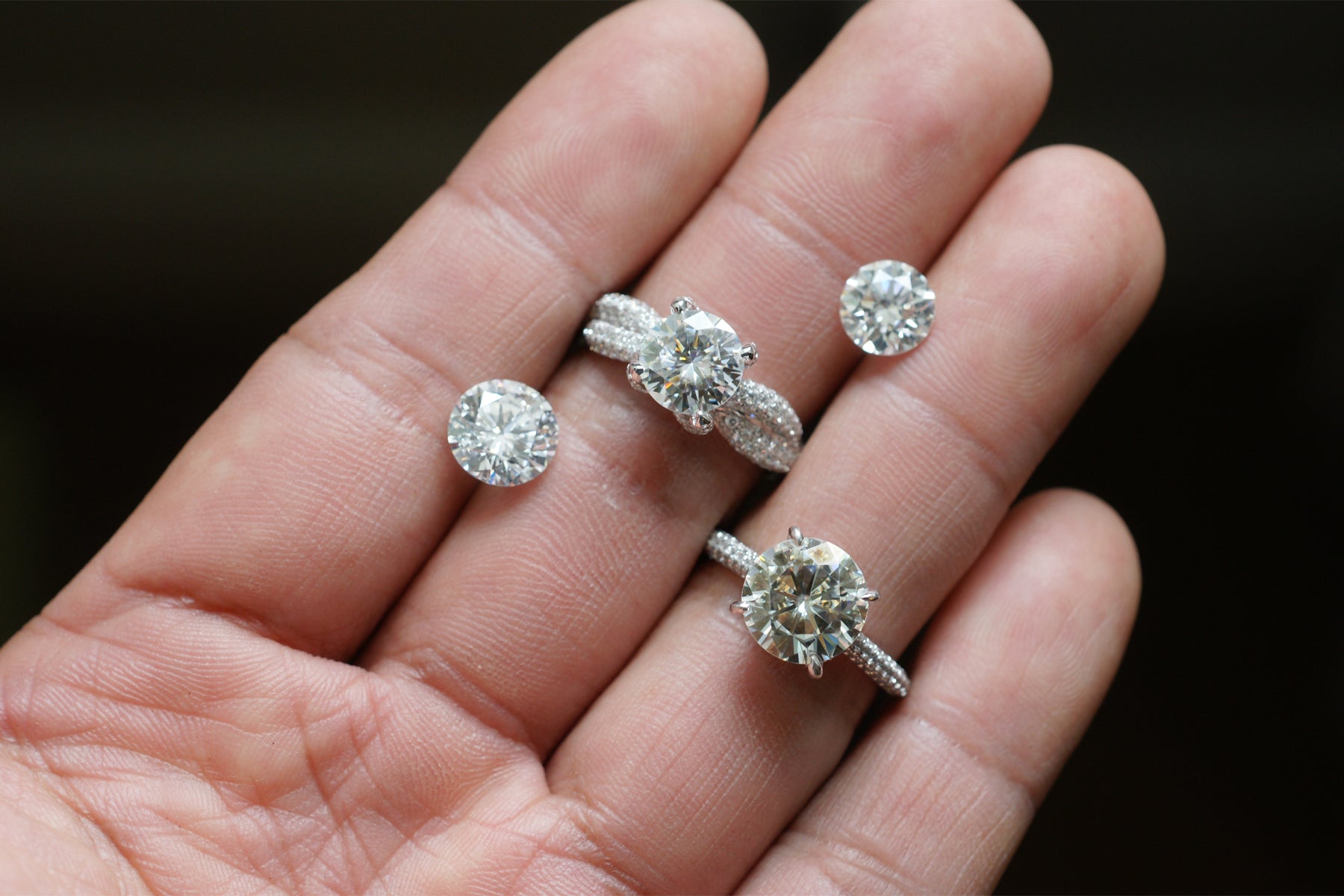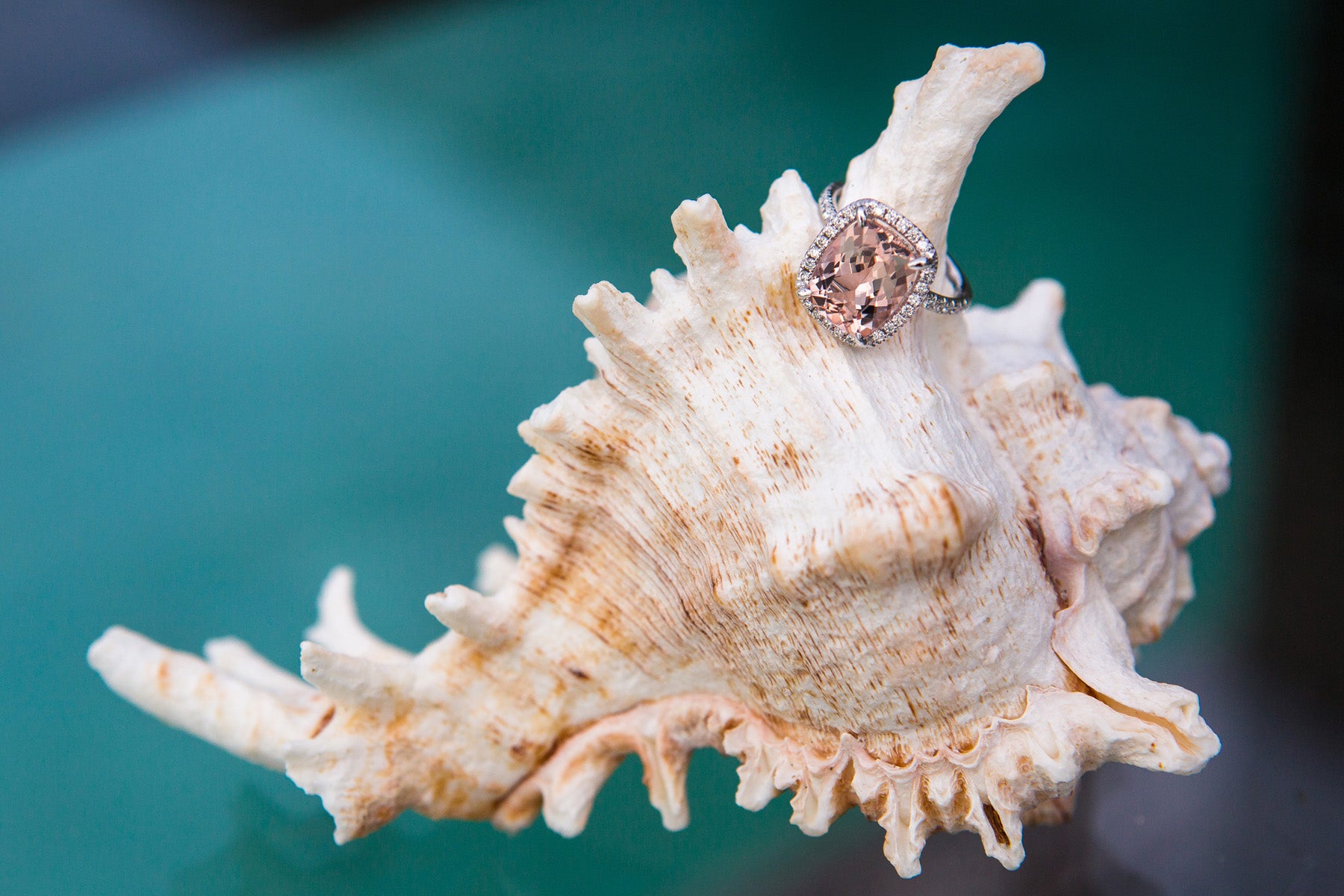Article: Moissanite Vs Diamond

Moissanite Vs Diamond
Moissanites are incredibly sparkly and remarkably similar to how diamonds look. With the cost of moissanites being a fraction of the cost of diamonds, we will help you choose which suit you best.
Read on to learn about the differences between diamonds and moissanites. This guide will help you decide which is right for you.
Diamonds and moissanites are among the most popular precious gems used in engagement rings, but the similarities and differences between them often get confused. We’ve put together an overview of what you need to know about each stone to help you make informed decisions on the engagement ring that you’ll want to pass onto future generations.
What's moissanite?
Moissanite is the most popular diamond alternative for couples on a budget. Most people can't see the difference between the two. Many people think of moissanite as a "fake" diamond which is completely wrong, a moissanite is a gemstone on its own which so happen to look so similar to a diamond.
Where does moissanite come from?
Moissanites pretty much come from out of space, a meteorite deposited particles on earth but it is so rare to find moissanites that most of the moissanites on the market are lab-grown.
Although grown by scientists instead of created in the earth's crust, lab moissanites are absolutely real moissanites—they display the same chemical and optical properties as natural moissanite. Even expert gemologists can't tell the difference. These facts apply also to lab-grown diamonds.
Why moissanite?
- Much less expensive than diamonds: for example a common 1 carat moissanite at its best quality in colorless premium cut will cost around $500 vs a similar quality clarity and color in diamonds will cost you nearly $10K, yes $10,000.00.
- Always available in premium clarity, since lab can control most environment, each moissanite will be very clean.
- Ethically sourced and avoid the wrong human interaction possible.
The Starlight Oval Moissanite Ring
Why diamonds are forever?
- A slogan from De Beers that will change how you think of a diamond.
- Diamond's characteristic chemical composition and crystal structure make it a unique member of the mineral kingdom. Diamond is the only gem made of a single element: It is typically about 99.95 percent carbon. (source GIA.edu)
- On almost all modern birthstone lists, diamond is recognized today as the birthstone for April. Diamond is also the gem that marks the 60th and 75th wedding anniversaries.
- From the millions of years it takes for mother nature to create a diamond to what a diamond represents in today society, its durability and strength, diamonds are forever...
The good and the bad
The Good In Moissanite |
The Good In Diamond |
|
|
The Bad In Moissanite |
The Bad In Diamond |
|
|
Alternative to diamonds
The best alternative to a diamond is a diamond itself, but not mined: lab-grown diamonds are conflict free, they have the same physical composition as an earth-mined diamond. And with a controlled environment, lab-grown diamonds are usually cleaner, better clarity and they can save you a bunch of cash.
Other alternatives are colored gemstones such as white sapphires, morganites, aquamarines and moissanites, the choice is yours.


